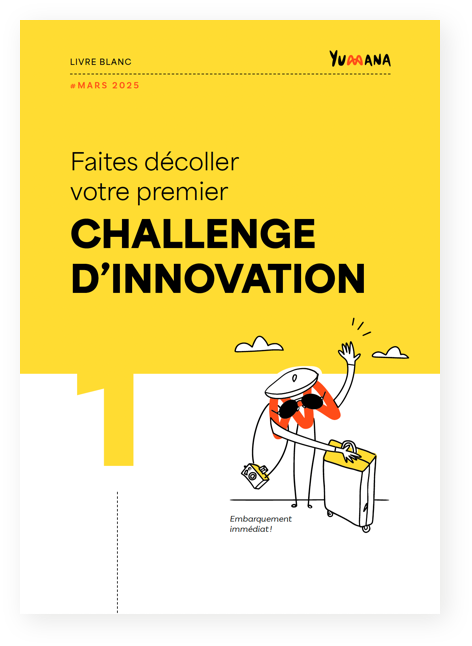Time has inspired generations of philosophers, authors and thinkers, as well as entrepreneurs. Our relationship with time can vary greatly. When it comes to innovation, the relationship with time depends largely on the sector of activity and the organization of the company. Where it takes 10 years to develop a new drug, 10 weeks will be needed for SaaS software or a mobile application.
Behind the question of timing lie a number of issues: is a time-consuming innovation a bad innovation? And the reverse is also true: is a good innovation built too quickly a bad one? How much time should be devoted to the different phases of innovation, from ideation to market launch? What to do with a good idea that arrives too soon?

The timing of the different phases of innovation
The innovation funnel counts five main phases. Each of them has its own time limitations that need to be respected to get the most out of them and to build your project on the right foundations.Restructuring Phase
This is an important adaptation stage, because it is the breeding ground for ideas and projects. It consists of developing a culture of innovation within the company. While a growing number of middle managers generally understand the vital need to innovate, since they are aware of the day-to-day operational issues, top management must also embrace it. It is not easy to challenge established, stable and controlled situations that may have to be abandoned. The future of a company is not necessarily determined by its economic health or market share. The more managers are resistant to change, the greater the need to integrate them into the process with the deepest commitment. This is an essential milestone: no corporate innovation project can ever be born or survive without the will and support of top management. In some companies that are better prepared than others, this can take a few weeks. For others, where cumbersome and conventional thinking dominates decision making, it can take months or even years. In this respect, the American model of “winner takes all” applies: the more agile the company is and the faster it is willing to get on board, the more quickly and efficiently it will be able to implement its project. When we talk about transformation, the first who can stand on the starting line will win the race, compared to his competitor.The ideation phase
This is the time when employees share ideas and initiatives that can be developed internally. The issue of timing then is formulated otherwise: how long do you have to wait before a good idea can get noticed? At what point can we finally say that an idea is actionable and can be transformed into a project? If the idea & innovation management software acts as an accelerator and catalyst, the benefits of its use accrue to the company. In fact, it all depends on the cultural context, the opportunities for interaction, the freedom of speech given or assumed, the internal incentives and initiatives put in place to encourage involvement. In general, the more participants there are, the greater the diversity of ideas and community engagement. Sometimes a good idea can stay within the innovation management software for several weeks. In order to make it more substantial, it will be reworked, revised and modified many times. While everyone can have a flash of genius, you have to be careful not to rush ideas off the idea management software. As long as the community remains active around the idea, it can only get better.Maturation phase
Once the idea has passed all the initial hurdles, it can finally be expressed freely. This is the time to pick it to prevent it from decaying. Finding the right timing is important, as it needs to be mature enough to be usable, but not too mature so as not to tire the participants. Usually, the right time is when it has exhausted all the suggestions and feedback from the community. Now is the time to extract it to work on and shape it. In marketing, we do lead nurturing. Here, we do innovation nurturing. We set up working groups, test assumptions, raise awareness among the business units concerned and work in a cross-disciplinary approach. It is a step that structures the transition from idea to project.Development phase
The idea has left its cocoon and is in the hands of a business unit. Here, more industrial and standardized processes are applied, with a team, a leader, objectives, a budget and, a schedule. The development phase can sometimes take several months, with prior milestones to measure progress. When merging within an operational business unit, the project must be integrated into existing processes which often depend on current priorities. The timing is then in the hands of the business, who have to cope with all their projects. While it no longer belongs to the employees involved or to its author, it must be regularly presented as a symbol of the community work that helped bring it about.Go-to-market phase
This is the final phase which involves its implementation, as part of an internal service or procedure, or its introduction to the market if the innovation is to be made available to customers. Depending on the development methods chosen, the innovation may take the form of a fully developed product, marketed and ready to be marketed or implemented, or it may take the form of an MVP (minimal viable product), which is more in line with an iterative approach in start-up mode. This phase can take longer when developed in-house, as it has to go through a series of quality checks and validations which can slow down its distribution. On the outer development side, the output will inevitably be imperfect and assumed, as it is the customer feedback and the market response that will serve as the test. In the case of an external intrapreneurial development project, this is only the first stage of the project’s life cycle, which can last several months or years.How to accelerate the innovation funnel and life cycle?
Having a good idea is one thing, but turning it into a viable business is another. It takes time for innovation to become a reality. The markets do not all develop at the same speed, and internal services are already in permanent emergency mode. Innovation requires speed, daring and risk-taking. These are all factors that are totally contradictory for large companies. Yet, is it impossible to innovate in a company? Fortunately, far from it, but in order to do so, we must face the structural challenges and difficulties. Developing a project internally takes time. We can either accept this time, or we can choose to think a little differently to speed things up. The solution then consists in extracting the ideas and the project leaders to give them the necessary tools to succeed. To achieve this, the transformation phase must be carried out in a very profound way, because extraction – which is characterized by a true intrapreneurial approach – can challenge the dominant culture of large groups.Timing is also an ingredient in the recipe for success
Nothing is more powerful than an idea whose time has come.
Victor Hugo
This quote attributed to Victor Hugo alone could be enough to illustrate the importance of timing in collaborative innovation. Time is an undeniable key factor for success.
A study conducted by the famous American financier Bill Gross on 200 start-ups emphasizes that timing seems to have by far the most important impact on the success of a company. With a score of 42%, it was deemed more important than the team/execution matching (32%), the idea (28%) or even the business model (24%), and funding (14%).
Timing is about having the right idea at the right time. If technological innovation is important, the ability to observe, intuition and audacity are the best qualities for any entrepreneur or intrapreneur.

CEO & Co-Founder Yumana



